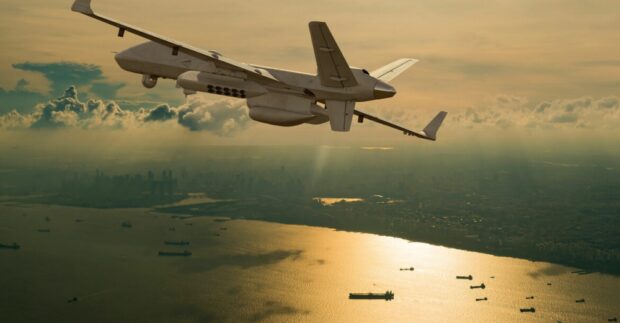On July 4th the Greek Parliament’s House arms contracts committee approved new arms programs, one of which is the acquisition of the MQ-9B SeaGuardian with a budget of $400 million.
The system is not unknown to Greece, nor is the routing of its acquisition a surprise. We remind you that on December 10, 2019, an official visit of the Greek military leadership and briefing on the specific UAV took place at the 110th Fighter Wing (110 AM) in Larissa, while a few days later, on December 19, a related flight demonstration took place.
The MQ-9B SeaGuardian is a version of the MQ-9B SkyGuardian, but with structural improvements for greater durability and use in extreme weather and improved flight control software. Also, the MQ-9B SeaGuardian is more resistant to bird strikes and lightning strikes. Briefly, the MQ-9B SeaGuardian can perform a range of missions such as intelligence gathering, surveillance and reconnaissance, support for humanitarian operations and natural disaster response, search and rescue, border surveillance and anti-smuggling, etc.
The MQ-9B SeaGuardian’s primary sensor is the AN/DAS-1 MTS-B (Multi-Spectral Targeting System-B) multi-spectral targeting system with monochrome and color day television camera, infrared camera and image intensification camera with range finder and laser designator. It also incorporates the AN/APY-8 Lynx II radar, with a synthetic imaging system, a moving ground target indicator system and a sea area survey system. For its safe flight, especially over populated areas, the MQ-9B SeaGuardian integrates the TCAS II (Traffic Alert and Collision Avoidance System) and ADS-B (Automatic Dependent Surveillance-Broadcast) systems.
In January 2021, GA-ASI announced that in collaboration with the Italian Leonardo, it will integrate the SeaSpray-7500E V2 surface search radar into the MQ-9B SeaGuardian. The radar will be integrated externally, in a spindle, on the ventral suspension pylon. The SeaSprey-7500E V2 is an AESA technology intelligence gathering, surveillance and reconnaissance radar. It weighs 104 kg, operates in the “X” frequency band and has a range of 320 nautical miles (593 km).
In addition to sensors, the MQ-9B SeaGuardians incorporate a data link system and VHF/UHF communications systems. The systems have an operational life of 40,000 flight hours and can take off and land automatically. They operate at a maximum operational altitude of 40,000 feet and can fly continuously for 40 hours. Their maximum speed is 389 kilometers per hour. Their length is 11.7 meters and the wingspan is 24 meters. The maximum internally carried fuel is 2,721 kg, while the maximum carried load is 2,177 kg on nine mounting stations (sensors and weapons). They carry a Honeywell TPE331-10 engine with a maximum power of 900 hp and a digital engine control system.
The MQ-9B SeaGuardian is one of the most advanced UAVs of its class in the world, capable of flying for more than a day. It is a multi-mission UAV whose modular architecture allows rapid integration of payload, which enables full tactical situational awareness. Particularly important is the ability of the MQ-9B SeaGuardian to search for targets both above and below the surface of the sea.
We remind you that in January 2021 the US Navy tested the MQ-9A Block.5 Reaper in an anti-submarine role, as part of expanding the operational portfolio of the MQ-9B SeaGuardian version. During testing the MQ-9A Block.5 Reaper carried and launched 10 sonar and managed to track a simulated underwater target for three (3) hours, using General Dynamics’ UYS-505 acoustic signal processing software. Also, all this time he was transmitting the findings to a real target at a ground control station. According to GA-ASI each MQ-9B SeaGuardian will be able to incorporate four (4) baskets of 10 size “A” sonar or four (4) baskets of 20 size “G” sonar in an equal number of wing mounting stations.
For the future, GA-ASI has announced that it will develop a new version of the MQ-9B SkyGuardian/SeaGuardian short takeoff and landing for use from aircraft carriers or short runways. According to GA-ASI the short take-off and landing capability will greatly expand the operational envelope of the MQ-9B and boost its commercial prospects. At the heart of the release will be a collection (optional) which will be integrated into the wings and tail section within 24 hours. The main craft and sensors remain intact. The MQ-9B’s wings will fold down to fit in a hangar, and taking off from an aircraft carrier will not require the use of a catapult.
Source: Defence Review

